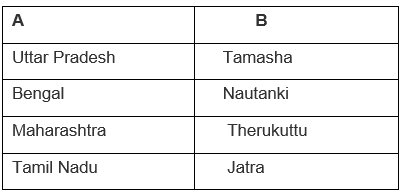Worksheet: Our Heritage | Social Studies for Class 5 PDF Download
Q1: Fill in the blanks
(i) ______ refers to the traditional way of doing certain things by a group of people.
(ii) The material form of our heritage are the ______ and ________.
(iii) Buland Darwaza is over ______ metres high.
(iv) Our national emblem has ______ lions.
(v) Orissa is well known for ______.
(vi) Sanchi Stupa is famous for its ________.
(vii) The colours used in the miniature paintings are derived from ________and ________.
(viii) _________ was a great mathematician and astronomer of ancient India.
(ix) The performing arts include _________, __________and __________.
(x) Buddhists used stories called ________ to teach important lessons about good behaviour.
Q2: Answer these.
(i) In which state of India do you live? Which is the official language of your state? Which languages are used in your neighbouring states?
(ii) What is Ajanta known for?
(iii) Who built Taj Mahal? Where is it located?
(iv) Write the names of three important buildings of your state.
(v) What are the costumes of women and men in your state? Do they use the same costume throughout the year? Why? Why not?
(vi) How can we help in the maintenance of places of importance in our country?
(vii) Write one difference between folk dance and classical dance.
(viii) What is a raga?
(ix) Who built the city of Fatehpur Sikri?
(x) Who was the son of the Mughal emperor Akbar?
Q3: Unscramble the words to discover dances of India.
(i) N I R I A M U P
(ii) A H A T K K
(iii) A T I K K H A A L
(iv) I B U H
(v) R N A H G B A
Q4: Write ‘T’ for True and ‘F’ for False :
(i) Taj Mahal is one of the Seven Wonders of the World.
(ii) The Red Fort was built on the banks of the river Saraswati.
(iii) Ancient Indian books and manuscripts were written on palm leaves and the bark of trees.
(iv) In Indus Valley, people did not know how to read and write.
(v) Ramayana and Mahabharata are the ancient epics.
(vi) Varanasi is famous for its brocade work.
Q5: Match the followings.

Q6: Name the following.
(i) Two historical monuments of India.
(ii) Two classical dance forms of India.
(iii) Two forms of Indian classical music.
(iv) Two musical instruments used in our country.
(v) Two famous Ayurvedic physicians.
Q7:
(i) Find out from your parents the name of diseases against which you were vaccinated in your childhood.
(ii) Share the contributions of Sushruta in medical sciences with your friends and members of your family and note down in your copy.
(iii) Make a Project file on “Our non material heritage”. Illustrate with pictures.
You can access the solutions to this worksheet here.
|
33 videos|264 docs|50 tests
|
FAQs on Worksheet: Our Heritage - Social Studies for Class 5
| 1. What is the significance of our heritage in shaping our identity? |  |
| 2. How can we preserve our heritage for future generations? |  |
| 3. What role does language play in our heritage? |  |
| 4. Why is it important to celebrate cultural festivals? |  |
| 5. How do historical monuments contribute to our understanding of heritage? |  |





















